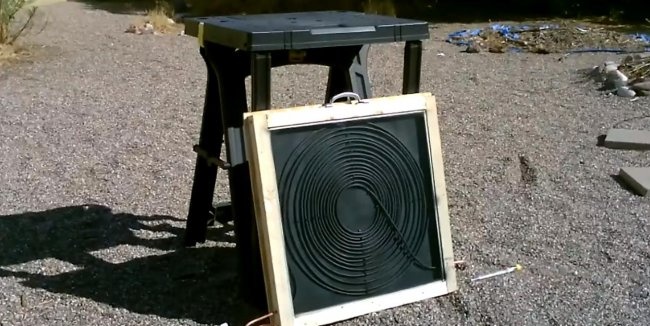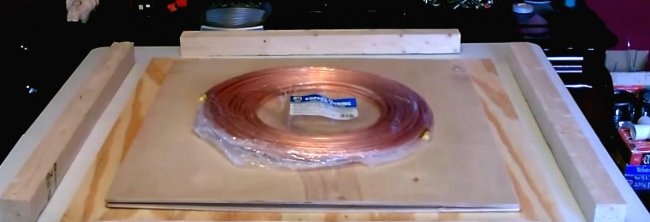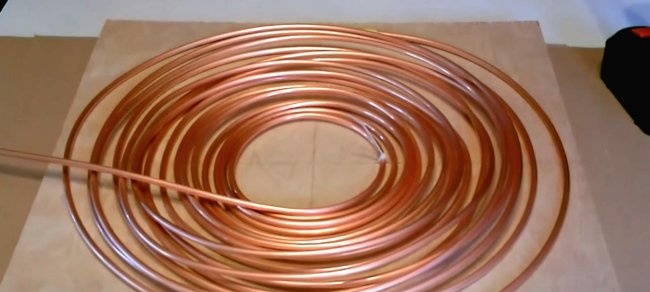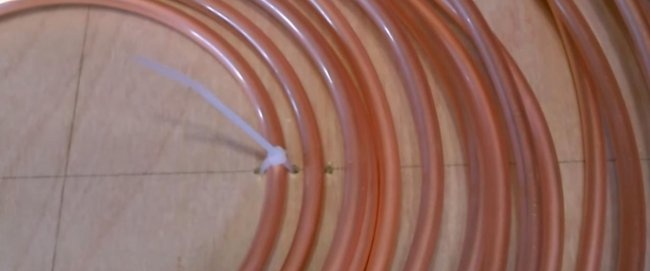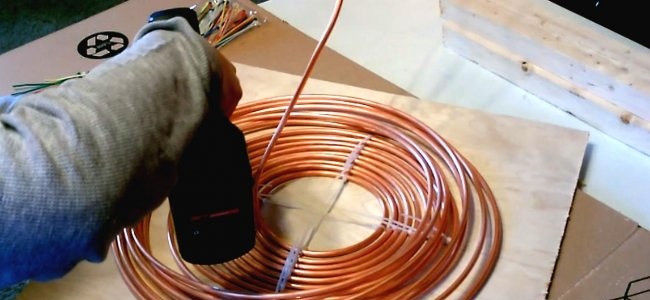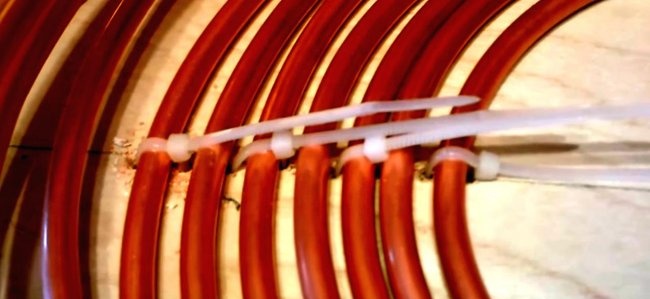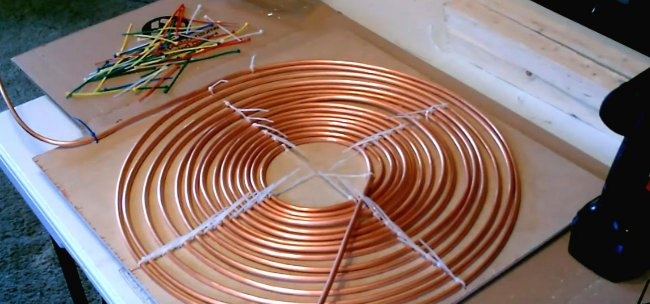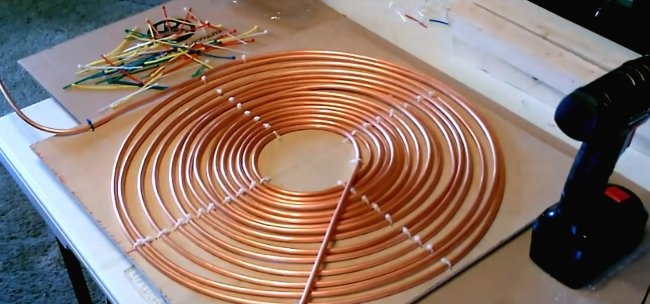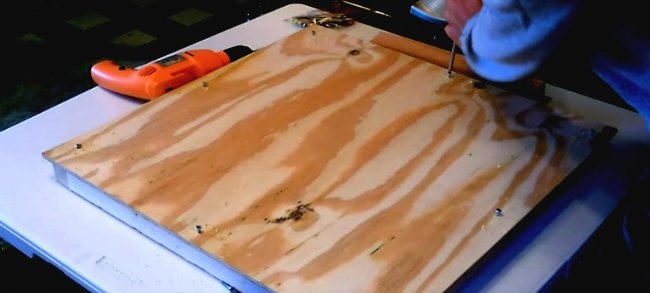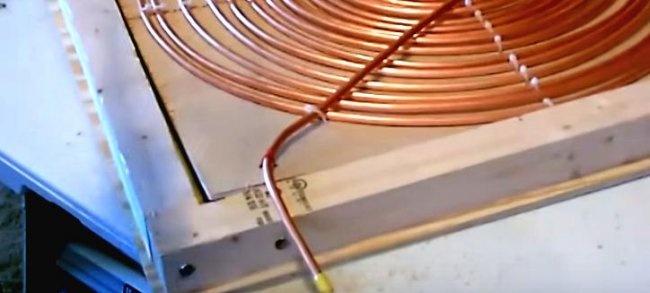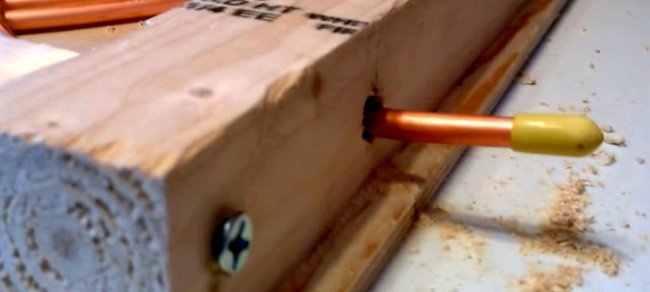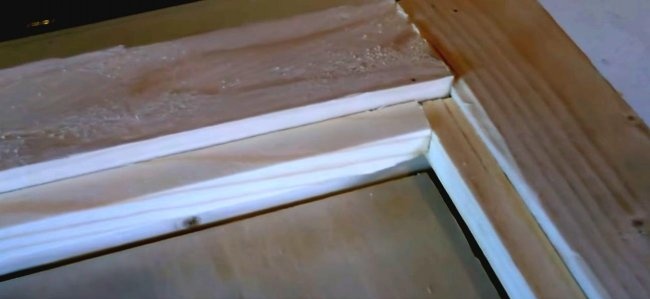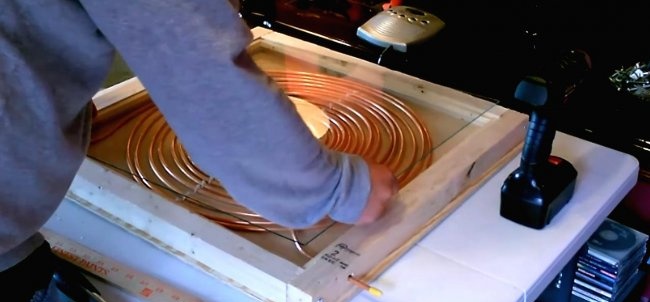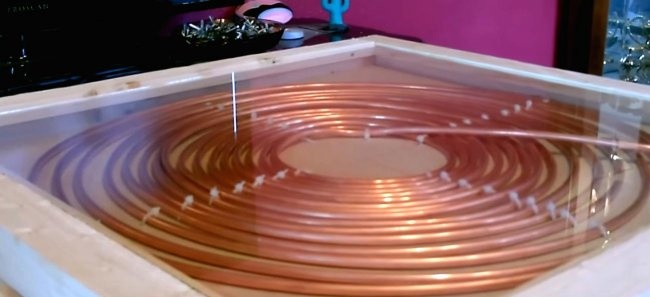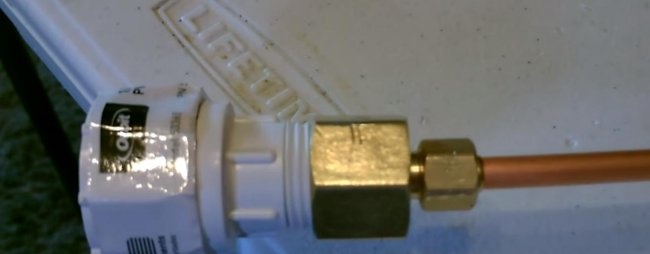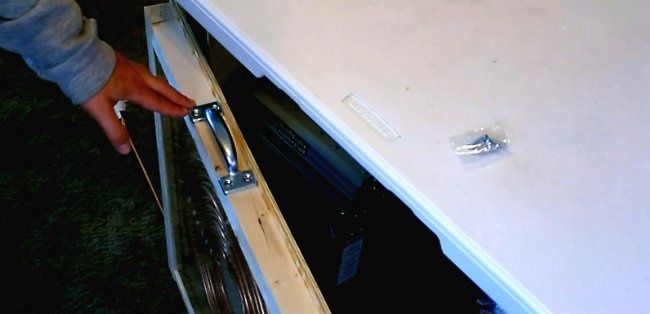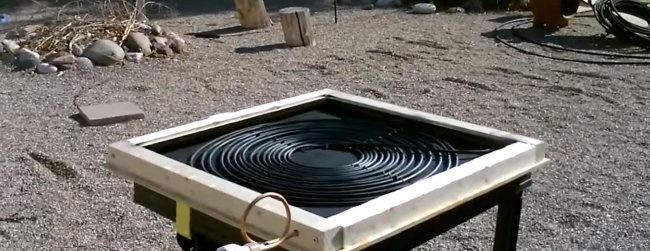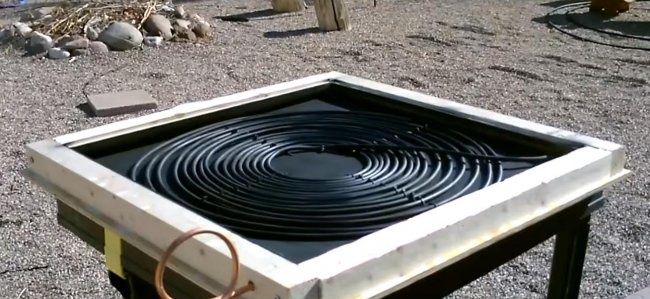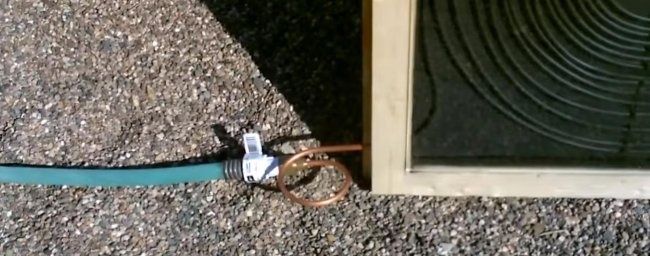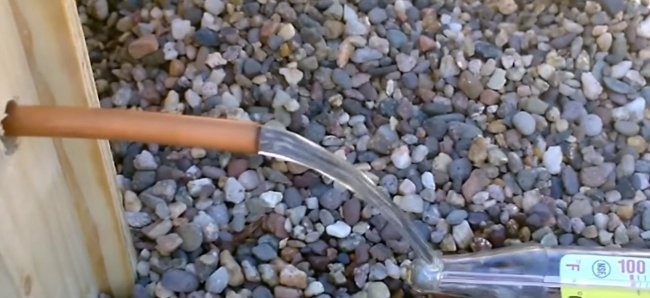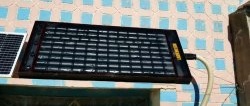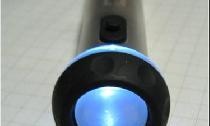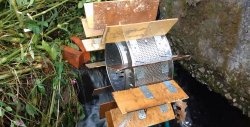solar water heater
A solar water heater is also called a solar collector. It serves to heat running water.
The simplest solar heater is a barrel painted black and filled with water. Black color absorbs solar energy better than other colors and converts it into heat. As a result, the water in the barrel will heat up.
Naturally, this is the most primitive way of collecting thermal energy from the sun. I'll show you how to make a portable solar water heater, a simple design using readily available parts that you can easily buy at any hardware store. This water heater will be efficient and very easy to make.
The solar collector is a copper tube, twisted in a spiral, enclosed in a rectangular housing with one transparent wall. The water heater is light in weight and small in size, so it can be easily transported, for which a carrying handle is screwed on the side.
I personally use a solar water heater to quickly heat the water in the pool.Since it can also operate in winter, it can even be used for heating during the day.
- Everything is free, helps save energy.
- The solar collector also works in winter, but with less efficiency.
- Does not require special costs for the manufacture of equipment.
- Pumps that drive water can also be powered from the sun using solar panels.
We will need:
- A coil of copper tube 15 meters long and 6 mm in diameter.
- Plastic cable ties (nylon ties).
- Plywood for the back wall.
- Wooden bars and slats for side walls and glass fastening.
- Plexiglas or organic glass.
- Black spray paint.
- Fasteners (nails, screws, self-tapping screws).
- Adapter fitting for copper pipe.
Perhaps I missed something else.
So, it is necessary to lay out the tube in one layer with a small indentation in order to estimate the dimensions of the future solar collector. Or you can immediately take a certain size of the box, and then cut off the extra tube.
After the size has been chosen, draw lines along and across with a pencil. These will be the lines for attaching the tube. We unfold the handset. We drill holes according to the diameter of the clamps and fasten the tube with them, see photo.
So we gradually secure the entire skein. Then we cut off the protruding parts of the clamps with wire cutters. The plywood on which our coil is now located is not the back of the housing. We will make the body separately, and we will put this panel there.
We assemble a box under the panel with a coil.
We put our plywood with a coil into this box. If you plan to use the collector in the winter, I recommend placing insulation between the back wall and the plywood with a coil.
We drill holes in the side bars for the tube to come out.
We nail the slats along the inside on which the glass will lie.
We measure the glass so that everything is flush, without unnecessary grooves.
We screw the adapters under the garden hose.
I screw on the handle for carrying and transportation.
Spray paint the inside surface.
Cover with glass.
We connect a hose with water and apply a little pressure.
On a sunny day, the outgoing water at medium pressure can heat up to about 75 degrees Celsius.
The solar water heater does a good job of heating water without too much complexity, so I recommend trying it again.
Such panels can be arranged in groups, then the efficiency of such a system will be many times greater.
Large garden pools have a self-contained water filtration system that operates continuously. By including a water heater in this system, you will not lose anything, and the water in the pool will always be warm. And in general, the entire pool can be in the shade, and the solar collector in the sun.
Heating by several panels, using not a copper tube, but a rubber garden hose. The efficiency is of course lower, due to the poor heat conduction of the garden hose.
[media=https://www.youtube.com/watch?v=BplFZt6DCqY]
The simplest solar heater is a barrel painted black and filled with water. Black color absorbs solar energy better than other colors and converts it into heat. As a result, the water in the barrel will heat up.
Naturally, this is the most primitive way of collecting thermal energy from the sun. I'll show you how to make a portable solar water heater, a simple design using readily available parts that you can easily buy at any hardware store. This water heater will be efficient and very easy to make.
What is a solar water heater?
The solar collector is a copper tube, twisted in a spiral, enclosed in a rectangular housing with one transparent wall. The water heater is light in weight and small in size, so it can be easily transported, for which a carrying handle is screwed on the side.
What is the purpose of this solar water heater?
I personally use a solar water heater to quickly heat the water in the pool.Since it can also operate in winter, it can even be used for heating during the day.
Advantages of solar water heating
- Everything is free, helps save energy.
- The solar collector also works in winter, but with less efficiency.
- Does not require special costs for the manufacture of equipment.
- Pumps that drive water can also be powered from the sun using solar panels.
Solar collector manufacturing process
We will need:
- A coil of copper tube 15 meters long and 6 mm in diameter.
- Plastic cable ties (nylon ties).
- Plywood for the back wall.
- Wooden bars and slats for side walls and glass fastening.
- Plexiglas or organic glass.
- Black spray paint.
- Fasteners (nails, screws, self-tapping screws).
- Adapter fitting for copper pipe.
Perhaps I missed something else.
So, it is necessary to lay out the tube in one layer with a small indentation in order to estimate the dimensions of the future solar collector. Or you can immediately take a certain size of the box, and then cut off the extra tube.
After the size has been chosen, draw lines along and across with a pencil. These will be the lines for attaching the tube. We unfold the handset. We drill holes according to the diameter of the clamps and fasten the tube with them, see photo.
So we gradually secure the entire skein. Then we cut off the protruding parts of the clamps with wire cutters. The plywood on which our coil is now located is not the back of the housing. We will make the body separately, and we will put this panel there.
We assemble a box under the panel with a coil.
We put our plywood with a coil into this box. If you plan to use the collector in the winter, I recommend placing insulation between the back wall and the plywood with a coil.
We drill holes in the side bars for the tube to come out.
We nail the slats along the inside on which the glass will lie.
We measure the glass so that everything is flush, without unnecessary grooves.
We screw the adapters under the garden hose.
I screw on the handle for carrying and transportation.
Spray paint the inside surface.
Cover with glass.
We connect a hose with water and apply a little pressure.
On a sunny day, the outgoing water at medium pressure can heat up to about 75 degrees Celsius.
The result of the work
The solar water heater does a good job of heating water without too much complexity, so I recommend trying it again.
Such panels can be arranged in groups, then the efficiency of such a system will be many times greater.
Large garden pools have a self-contained water filtration system that operates continuously. By including a water heater in this system, you will not lose anything, and the water in the pool will always be warm. And in general, the entire pool can be in the shade, and the solar collector in the sun.
Video of building a solar water heater with your own hands
Heating by several panels, using not a copper tube, but a rubber garden hose. The efficiency is of course lower, due to the poor heat conduction of the garden hose.
[media=https://www.youtube.com/watch?v=BplFZt6DCqY]
Similar master classes
Particularly interesting
Comments (0)

